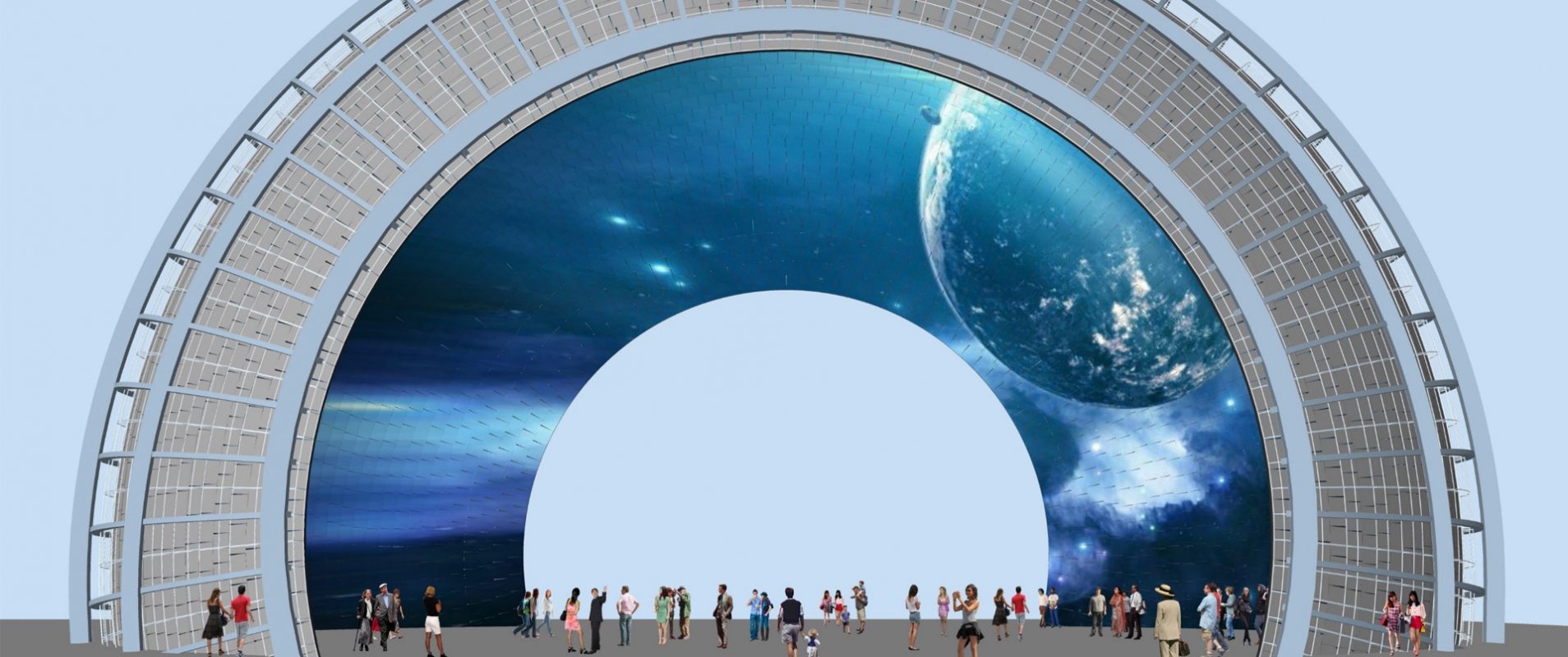The immersive dome industry is about to explode
Virtual reality (VR) has already established itself as an industry leader in the fields of entertainment, business and teaching. But now there’s a new kid on the block – immersive domes.
At this year’s NewImages Festival, hosted by Paris’ Forum des Images, the Full Dome model was a standout attraction. The festival is renowned for championing the future of digital creation and preserving the longevity of XR (extended reality) works. And industry leaders from Paris and Montreal were particularly interested in the immersive, multi-user capabilities of this new technology.
Similar to virtual reality immersive domes are lightweight spherical screens onto which powerful 360 degree digital images are projected. Equipped with compact servers they offer an incredible immersive experience for a wide range of users, including companies, medical professionals and individual consumers.
However, unlike VR, “[the Full Dome model] creates a social, group-based and shared experience based on immersion,” explains Montreal’s Society for Arts and Technology (SAT) general director Jenny Thibault. To understand this better we delve into the ways immersive domes are breaking barriers in the traditional virtual reality industry and redefining the concept of immersion.
Our favorite industry secret
For the NewImages Festival, the team at SAT helped curate a selection of 15 immersive projects that encompassed VR games to documentaries and AR works for social media. These works were projected on a dome specially built for the festival which was housed in a garden adjacent to the Forum des Images.
As a yearly event, the festival is much more than an exhibition for emerging XR works. For major XR players, it is also a place to develop new applications, projects and collaborations as well as discuss on-going changes in the immersive dome industry.
Changes such as the transition away from traditional virtual reality (VR) which requires extensive coordination and support. Hosting large-scale VR events poses a financial challenge, as equipping each participant with a VR headset is costly. Unlike VR setups that typically cater to small groups, immersive domes offer a more cost-effective solution with greater revenue advantages. They can accommodate at least 150 people simultaneously making them suitable for larger audiences.
Emphasizing this advantage, Thibault added “We encourage VR producers to develop a dome version as well because there is already a [global network] of domes. [Plus, digital] projects … can be exported … can travel and create a better understanding of the medium.”
How will you use the dome?
Immersive domes are at the forefront of the VR/XR revolution and are redefining the boundaries of immersive experiences. Seamlessly blending size, location and advanced technology to create unparalleled environments, these domes adapt to their surroundings whether indoor or outdoor. Furthermore, the applications for immersive domes are only bound by our imagination making them a game-changer for any industry today.

